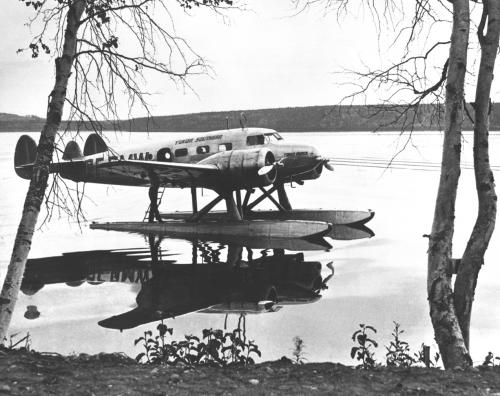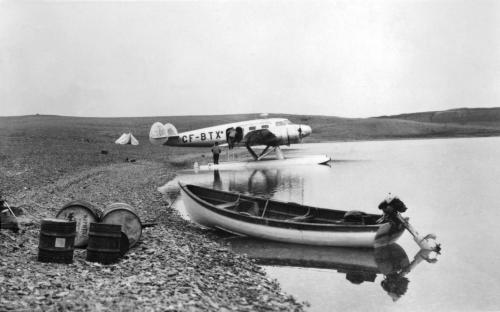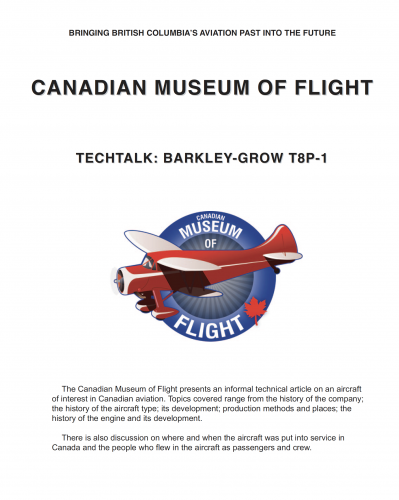Barkley-Grow

Barkley-Grow CF-BMW of Yukon Southern. CP Air photo.
The Barkley-Grow Aircraft Corporation was a U.S. aircraft manufacturer established by Archibald St. Clair Barkley and Captain Harold Bartley Grow in Detroit in 1936 to produce a small civil transport. The Barkley-Grow T8P-1 used Barkley's patented wing design. Although it saw limited production, the type was well-received as a bush plane in Canada.
Typical for the era, the Barkley-Grow T8P-1 was a low-wing monoplane of all-metal construction with a twin tail. The T8P (standing for Transport, 8 Passenger) was designed to be simple and rugged, thus the main wheels of the tailwheel undercarriage were not retractable, and this may have negatively impacted the type's reception in the marketplace. A novel design feature, however, was the wing structure. Barkley used what might be called a “horizontal cell” technique that has no ribs or spars. Long tapered strips of aluminum were bent to form V shapes which were then riveted tip to tip to form an “X”. These “X”s were riveted inside the wing side by side to produce the long “cells.” This wing structure was unique to the Barkley-Grow and according to mechanics who worked on the aircraft it was very light, very stiff, very expensive to build, and difficult to repair if damaged, but it gave no problems in service.
On Tuesday, 27 April 1937, Barkley-Grow Aircraft Corporation celebrated the rollout of the first Barkley-Grow T8P-1 at the Detroit Metropolitan Wayne County Airport. On Friday, 18 June 1937, Frank Cordova took off on the first flight with the Barkley-Grow T8P-1 #1 registered NX18388. All other test flights were carried out by the famous pilot, Lee Gehlbach, at the Detroit County Airport.
The prototype T8P-1 was used for demonstration flying. Canadian Car & Foundry test pilot, Victor (Shorty) Hatton, spent most of October 1938 on a demonstration tour of Canada (St. Hubert, Sioux Lookout, Ottawa, Porquis Junction, Wogaming, Fort William, Kenora, Winnipeg, Regina, Lethbridge, Edmonton, Saskatoon). Early in November 1938 he ferried the aircraft back via Toronto Malton to Detroit.
Like its two main competitors, the Lockheed Model 12 Electra Junior and the Beech 18, the T8P-1 was originally designed to a 1935 Bureau of Air Commerce specification (won by the Lockheed entry).
Sales in the U.S. were disappointing, only 11 being built, and most of the machines (seven) were sold to Canada, where the fixed undercarriage was no obstacle to the fitting of skis or floats.

Barkley-Grow CF-BTX at Walker Bay 1945.
The Museum has available a limited number of 20-page booklets on the history
of the Barkley-Grow. Call the Museum at (604) 532-0035.
of the Barkley-Grow. Call the Museum at (604) 532-0035.
